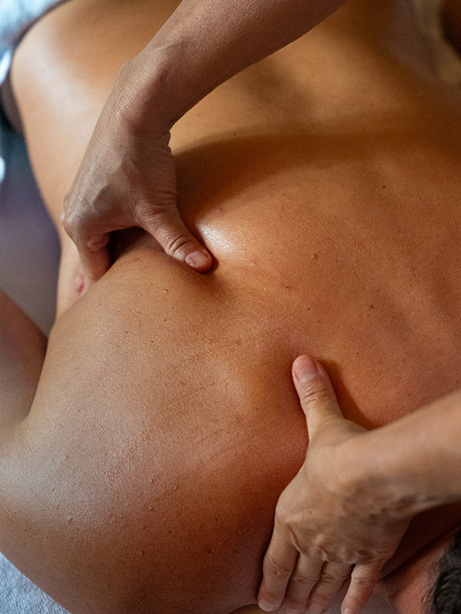

Fascia – the Underestimated Sensory Organ of the Body - Part 2
Michaela Altenberger,
How can fascia be experienced? Why is knowledge alone not enough to understand its significance? And which simple movements immediately make the tissue feel softer, freer, and more alive?
In the first part, we covered the basics: fascia are more than just sheaths. They are a fine, living network that coordinates movement, transmits information, and stores experiences. But theory alone is not enough – fascia need to be experienced. The body understands this language instantly when given the chance. With gentle movements, conscious breathing, and small rituals, it becomes possible to feel how fascia soften, create space, and bring the organism into balance.
Making Fascia Tangible
At the Krallerhof, working with fascia is an essential part of our longevity approach. Because we know: those who care for their fascia not only strengthen mobility and body awareness, but also regeneration, stress resilience, and inner calm.
Here are a few simple, soothing exercises that can be experienced both in everyday life and during a holiday:
- Spinal Rotation
While sitting or standing, slowly rotate to the right and left, letting the breath flow calmly. This gentle movement mobilizes the fascia along the spine and releases deep tension. - Opening the Chest
Extend the arms far back, draw the shoulder blades together, and consciously direct the breath into the chest area. The fascia in the chest expand, breathing and posture become freer. - Softening the Pelvis
Circle the pelvis or drop into a relaxed squat. The fascia in the lower body begin to regain suppleness – often accompanied by a sense of grounding and stability. - Relieving the Jaw
Gently open the mouth, allow small movements, almost like a silent “sigh.” The jaw relaxes, and with it many fine fascial strands that connect the entire head.
Fascia Care at the Krallerhof
Beyond these simple exercises, the Krallerhof offers a wide range of possibilities to support fascia:

- Fascial Massages & Treatments
Massages not only help to relieve muscle tension, but also specifically target fascial adhesions. - Movement Programs in the Spa & Gym
Gentle, rotation-based sessions that keep fascia supple and promote flow of movement – especially yoga. - Water & Heat
Our saunas, steam baths, and pools have a deep effect on the tissue: heat makes fascia more elastic, while cold provides freshness and stimulates circulation. - Longevity Lounge
Here, we combine the latest technologies such as red light and oxygen therapy with mindful bodywork – fascia also benefit from this cellular-level stimulation.
Working with fascia is not classic training. It is more like listening to the body – a fine-tuning, a conscious letting go.
At the Krallerhof, we create spaces and opportunities for this: through specialized massages such as Brazilian lymphatic drainage, which gently decongests and shapes the tissue, or Lomi Lomi Nui, which opens the body in wave-like movements and releases tension not only physically but also emotionally. Combined with other treatments, this approach deeply touches the connective tissue and grants the entire organism a new sense of lightness.

